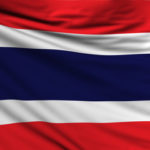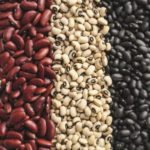30 interesting facts about chocolate
 Chocolate is one of the most popular sweets in the world, and it is widely distributed in various countries. Indeed, it is not so easy to find a person who does not love him! Of course, excessive eating of chocolate is highly not recommended, because it can be harmful to the body, but in moderate quantities and in the absence of individual contraindications, eating chocolate is not harmful at all.
Chocolate is one of the most popular sweets in the world, and it is widely distributed in various countries. Indeed, it is not so easy to find a person who does not love him! Of course, excessive eating of chocolate is highly not recommended, because it can be harmful to the body, but in moderate quantities and in the absence of individual contraindications, eating chocolate is not harmful at all.
Milk chocolate was invented when regular chocolate was mixed with condensed milk. One of the authors of this invention was Henry Nestle, whose name was named one of the most famous brands in the world.
Children are often told that acne can pop up from eating excessive chocolate on the face. However, science has not found any connection between chocolate and acne.
Italian scientists conducted a study and proved that people who regularly eat chocolate are less likely to suffer from clouding of their minds in old age.
Chocolate first appeared in Europe in the 16th century, when Christopher Columbus returned from his famous journey and brought cocoa beans with him.
In the United States, more than 1,500 tons of milk are consumed each day for milk chocolate production.
About 75% of all cocoa trees on Earth grow within 8 degrees north and south of the equator, and at a distance of more than 20 degrees they do not occur at all.
In the cult film Psycho, directed by Alfred Hitchcock, liquid chocolate was used to simulate blood.
In theory, chocolate can be stored almost forever, if the optimal storage conditions are met, which is practically unattainable in practice, since it is simply unprofitable economically.
In traditional Mexican folk medicine, chocolate is used as a medicine.
Chocolate contains a lot of carbohydrates and proteins, so athletes often eat it after exhausting workouts.
Every year, people on Earth buy about seven billion US dollars of chocolate.
White chocolate differs from ordinary chocolate in that it does not use cocoa powder – only cocoa butter. Therefore, it is sweeter, without a slight bitterness.
Most of all in the world of chocolate per capita is eaten in Sweden. On average, more than 11 kilograms of this product are produced per Swede per year.
Unlike most sugar-containing sweets, chocolate cannot cause tooth decay.
In the Aztec empire, cocoa beans were used as a currency.
The weight of the largest chocolate bar ever made reached 4.41 tons.
The connection between stress and the desire to eat a piece of chocolate is scientifically proven. Scientists have found that people who are often stressed out eat chocolate about twice as often as everyone else.
Phenamine contained in chocolate is a chemical that causes a condition similar to falling in love in the human brain.
The birthplace of cocoa beans is Central and South America. However, in our time, most of this product, about 70%, is grown in Africa. And the African country of Côte d’Ivoire accounts for up to 40% of the global production of cocoa beans.
Natural chocolate, when used regularly, helps cleanse blood vessels.
Hard chocolate was first obtained in the 19th century. Until that moment, it was only liquid.
A few centuries ago, the Catholic Church denounced eating chocolate.
Natural chocolate has a weak analgesic effect.
It also contains theobromine, a toxic substance in many animals.
The calories contained in a small piece of chocolate are enough for an adult to walk about 100 steps.
The life span of cocoa trees can reach 2 centuries, but they bear fruit only for 20-25 years.
One medium cocoa bean is enough to produce about one gram of chocolate.
July 11th is considered World Chocolate Day.
In ancient times, the Aztecs believed that eating chocolate helps to develop spiritually.
Among the Mayan Indians, chocolate was an indispensable attribute of various holidays.



























